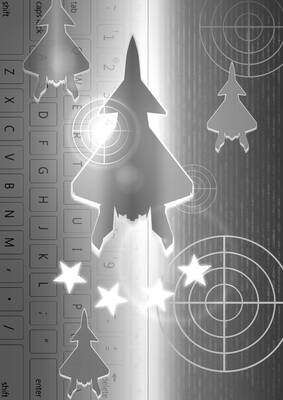Twenty opposition lawmakers are to visit Itu Aba (Taiping Island, 太平島) on Saturday next week, a trip that not only has raised controversy domestically, but might also cause more unnecessary friction between nations in the region.
The 46-hectare Taiping Island, the largest of the naturally occurring Spratly Islands (Nansha Islands, 南沙群島) in the South China Sea, is 1,637 km southwest of Taiwan proper. It has been under the control of Taiwan since 1956 and administered as part of the municipality of Kaohsiung, although China, Vietnam and the Philippines also claim sovereignty.
While the delegation’s original departure on Thursday next week has been pushed back, the delegation had emphasized that it would pick a new date tovisit Taiping before the inauguration of president-elect William Lai (賴清德) on May 20.
The opposition lawmakers plan to travel in a C-130 Hercules escorted by air and marine units, and intend to stay on the island for only two hours.
Delegation leader Chinese Nationalist Party (KMT) Legislator Ma Wen-chun (馬文君) said the visit has three purposes: to demonstrate Taiwan’s sovereignty over the island, to inspect ongoing construction and to boost the morale of the island’s garrison.
However, both the National Security Bureau and Ministry of Foreign Affairs have warned that it is not an appropriate time for either the president or lawmakers to visit Taiping.
The tensions between China and the Philippines are escalating because of territorial disputes, which have been aggravated by unlawful Chinese occupation and establishment of infrastructures on disputed shoals, and increasing skirmishes between the two countries’ coast guard vessels.
To reaffirm sovereignty is justifiable in and of itself, however such a delicate issue should be carried out at the right time.
Otherwise this could have a negative impact on Taiwan’s international image.
Then-president Ma Ying-jeou’s (馬英九) visit to Taiping in 2016 when the Philippine government had filed an arbitration case against China under the UN Convention on the Law of the Sea was not only criticized for worsening regional tensions, but it also foolishly brought Taiping, which originally was excluded from Philippine’s legal arguments, into the case.
Ma’s reckless move led to a ruling by the Permanent Court of Arbitration to define Taiping as a “rock” and not subject to the convention, which has negatively impacted the legitimacy of Taiwan’s control over the island.
Having held Taiping for more than seven decades, Taiwan has deployed more than 200 coast guard personnel and built a hospital, farm and runway.
In January, under President Tsai Ing-wen’s (蔡英文) instruction, the Coast Guard Administration completed a dredging project to allow larger vessels to dock at its wharf.
Nevertheless, while there is no urgent threat to Taiping’s security, the opposition politicians’ trip could be considered a trouble-making act that could escalate tensions.
It might also be seen as an attempt to echo China’s latest “10-dash line” claim in the South China Sea with Taiwan as “part of China,” which could further irritate Indo-Pacific states and democratic allies.
The opposition parties should understand the consequences of this reckless and unnecessary trip.

As the Chinese Communist Party (CCP) and its People’s Liberation Army (PLA) reach the point of confidence that they can start and win a war to destroy the democratic culture on Taiwan, any future decision to do so may likely be directly affected by the CCP’s ability to promote wars on the Korean Peninsula, in Europe, or, as most recently, on the Indian subcontinent. It stands to reason that the Trump Administration’s success early on May 10 to convince India and Pakistan to deescalate their four-day conventional military conflict, assessed to be close to a nuclear weapons exchange, also served to
China on May 23, 1951, imposed the so-called “17-Point Agreement” to formally annex Tibet. In March, China in its 18th White Paper misleadingly said it laid “firm foundations for the region’s human rights cause.” The agreement is invalid in international law, because it was signed under threat. Ngapo Ngawang Jigme, head of the Tibetan delegation sent to China for peace negotiations, was not authorized to sign the agreement on behalf of the Tibetan government and the delegation was made to sign it under duress. After seven decades, Tibet remains intact and there is global outpouring of sympathy for Tibetans. This realization
After India’s punitive precision strikes targeting what New Delhi called nine terrorist sites inside Pakistan, reactions poured in from governments around the world. The Ministry of Foreign Affairs (MOFA) issued a statement on May 10, opposing terrorism and expressing concern about the growing tensions between India and Pakistan. The statement noticeably expressed support for the Indian government’s right to maintain its national security and act against terrorists. The ministry said that it “works closely with democratic partners worldwide in staunch opposition to international terrorism” and expressed “firm support for all legitimate and necessary actions taken by the government of India

The recent aerial clash between Pakistan and India offers a glimpse of how China is narrowing the gap in military airpower with the US. It is a warning not just for Washington, but for Taipei, too. Claims from both sides remain contested, but a broader picture is emerging among experts who track China’s air force and fighter jet development: Beijing’s defense systems are growing increasingly credible. Pakistan said its deployment of Chinese-manufactured J-10C fighters downed multiple Indian aircraft, although New Delhi denies this. There are caveats: Even if Islamabad’s claims are accurate, Beijing’s equipment does not offer a direct comparison